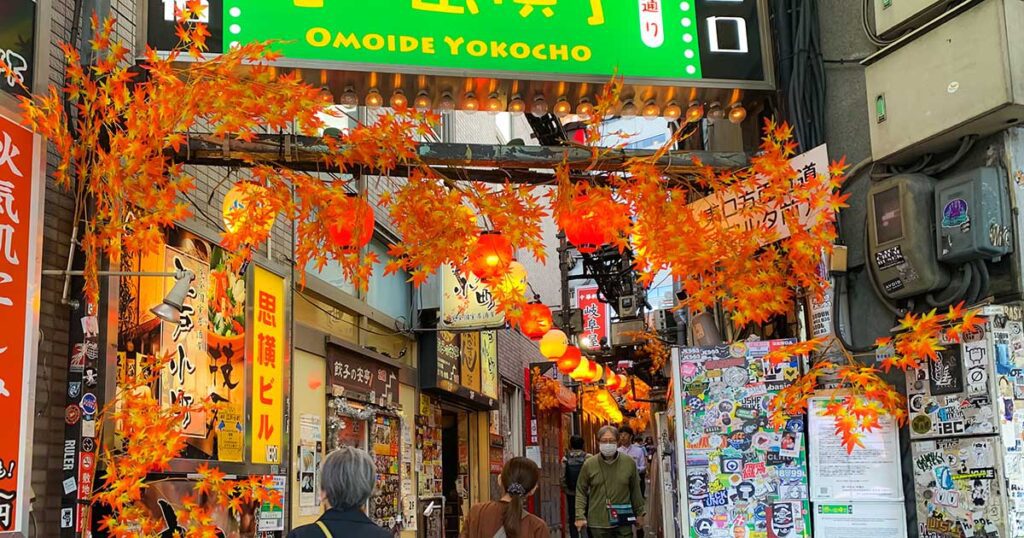Omoide Yokocho in Shinjuku is one of Tokyo’s 2,400 beautiful famous streets where people can enjoy the ancient time Japanese atmosphere in Tokyo. The small alley offers a message for people to visit Ueno Ameyoko, Ginza Yokocho, Nakamise Shopping Street, Sumida Kirakira Shotengai, or Ginza Yanaka local streets.
Table of Contents
Location:
Omoide Yokocho is located at the west exit of Shinjuku Station with a nostalgic old days atmosphere. It has easy access from any significant downtown Tokyo area. It contains 80 different shops and restaurants.
It’s only one minute walk from Shinjuku Station’s West Exit.
History:
Omoide Yokocho’s history is fascinating to know. The area has a similar black market history as Ueno Ameyoko Shopping Street.
After World War II, the area became a spot of a black market. During this time, laws and orders in Japan became weak. At the same time, war-torn citizens became needy.
During the post-war period, around 1946, the west exit became a burnt field because of the bombing, filled with rubble.
Shinjuku became the main transportation transit point of the neighboring areas, and people flocked to Shinjuku to start a business.
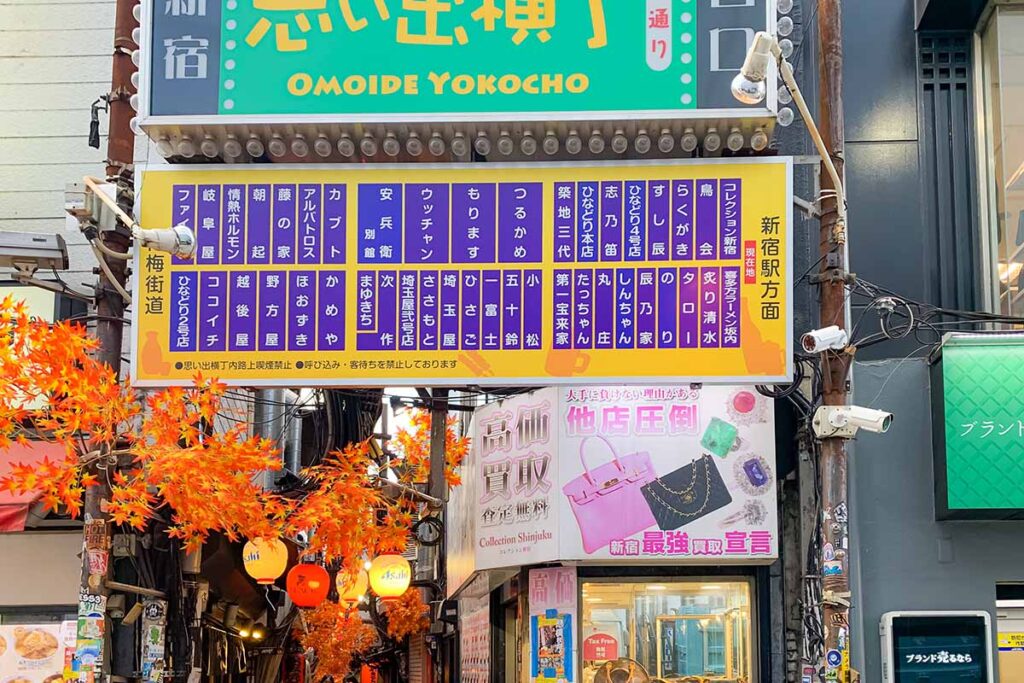
No houses and the street transformed into a market. However, to sustain themselves, the street vendors started selling all daily commodities like rice, clothes, soaps, potatoes, tempura, seaweed, oden, soy sauce, and drinks.
The area was not totally safe for all at that time. But the situation changed. The government legalized the site as a restaurant area, considering the needs of the people during the construction of Shinjuku Station in 1960, and business became safe and legal.
A fire accident on November 24, 1999, burned a third of the alley, and now we see an alley that provides a glimpse of the post-war.
Is Omoide Yokocho Safe?
Omoide Yokocho is completely safe for local and international tourists nowadays. People even wait alone for the restaurant to be opened for lunch alone.
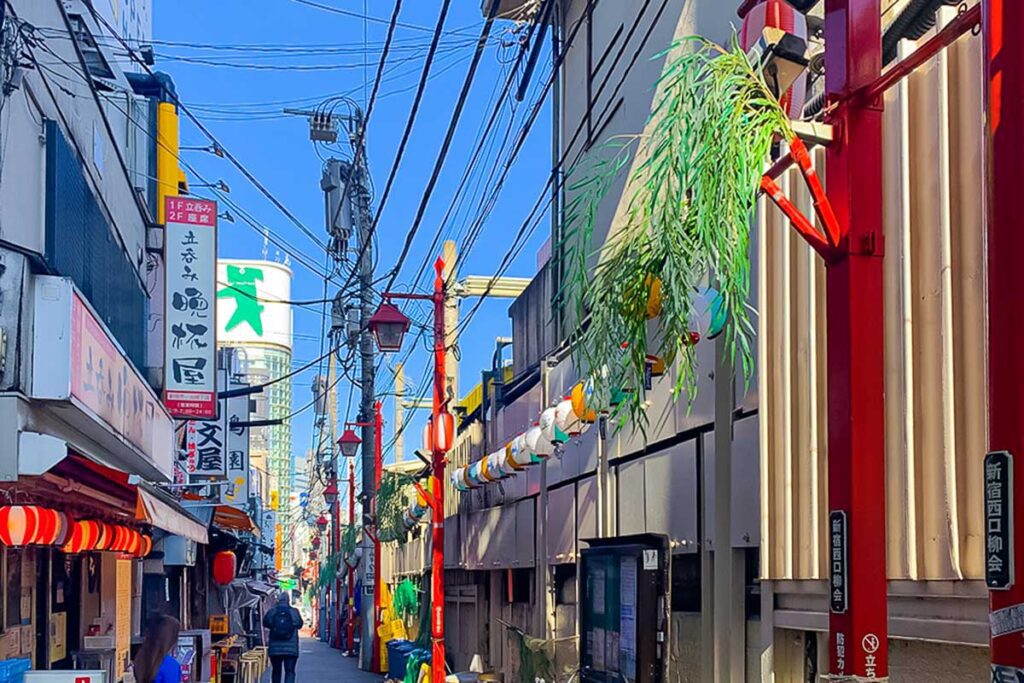
The old-looking decorated alley is not only safe but also tourists friendly. Most of the restaurants and shops keep English menus for non-Japanese speaking people.
There are benches, chairs, and tables on the streets. So you can take a seat, order what you like, and enjoy your day.
Omoide Yokocho Rules:
Do you want to visit Shinjuku Omoide Yokocho?
If the answer is ‘YES,’ then that’s a good choice. First, however, you should know at least three important rules of Yokocho.
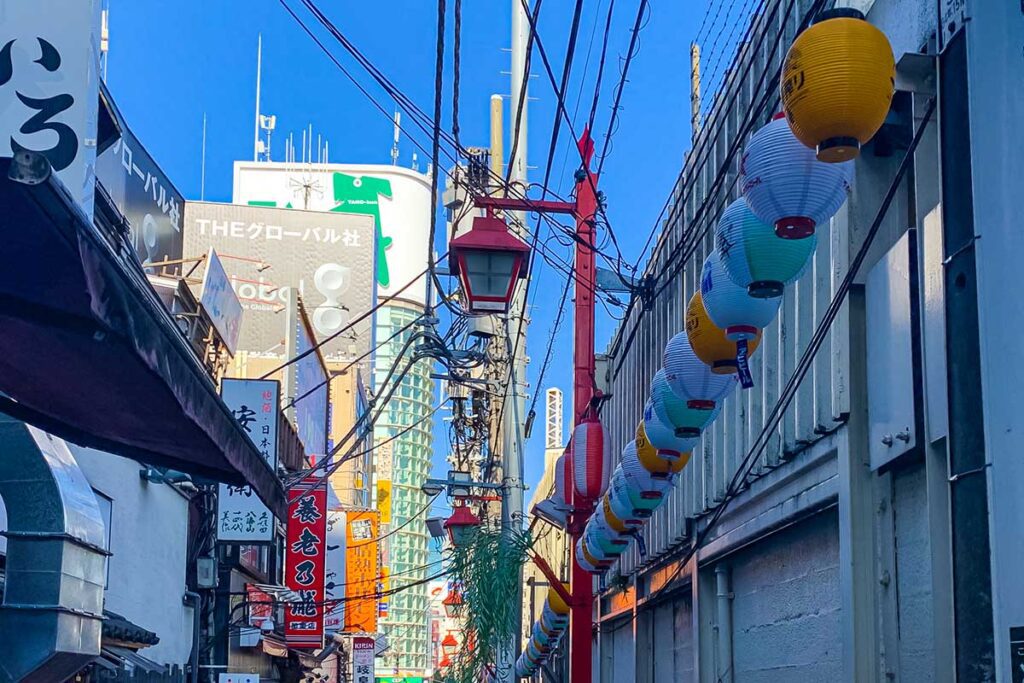
1) No cycling:
The alley is narrow. If someone rides on a bike, pedestrians can’t walk. You have a bike, that’s okay. But you have to push your bike, but you can’t ride.
2) No walking with a burning cigarette:
The narrow alley gets overcrowded quickly. Also, if someone walks with a burning cigarette, you may burn other pedestrians. However, every table has ashtrays, and you can smoke at restaurants.
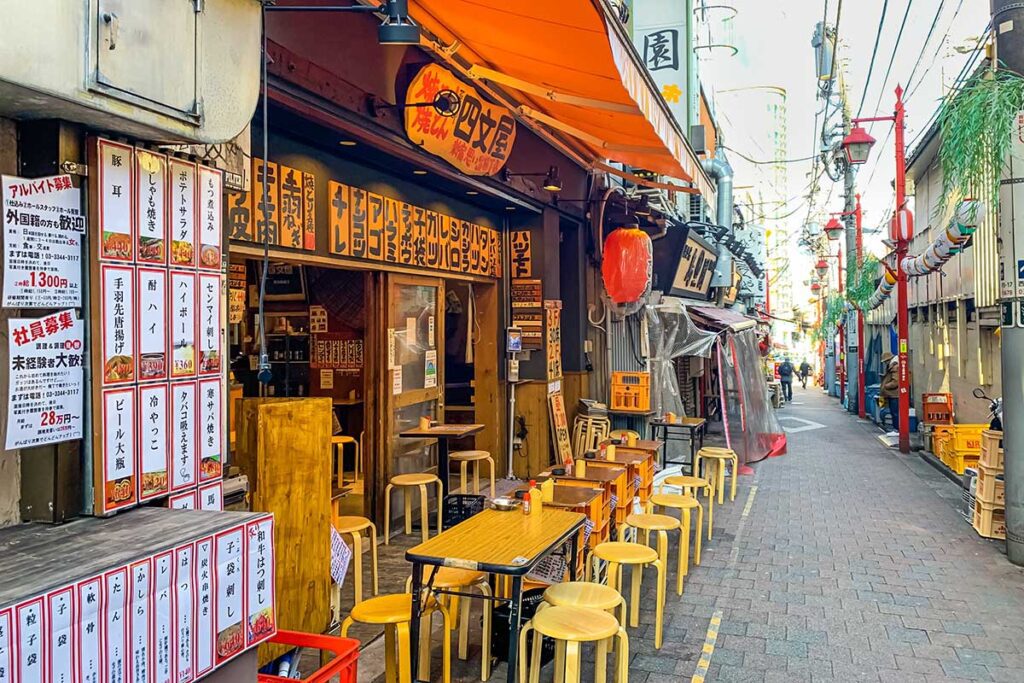
The alley has a sad background of a fire accident on November 24, 1999, that burned one-third of the alley.
3) No alcohol order without food:
Sometimes, somewhere, we may feel strange. Shinjuku Omoide Yokocho may sound to you the same. For example, customers are only allowed to order alcohol with food orders.
4) No kids:
Most of the restaurants don’t allow kids. So, if you’re with kids, you may not get a chance to taste Yokocho’s food.
Omoide Yokocho Food:
Among the 60 restaurants, most of the restaurants specialize in motsuyaki and Yakitori.
Motsuyaki is a Japanese word. ‘Motsu’ means ‘inside organs of pigs or cows,’ such as livers, intestines, kidneys, etc.
And Japanese word, Yakitori means ‘different parts of skewered small-sized grilled chicken,’ such as skins, livers, thighs, breasts, etc. Yakitori is an inexpensive popular dish that people enjoy with beer.
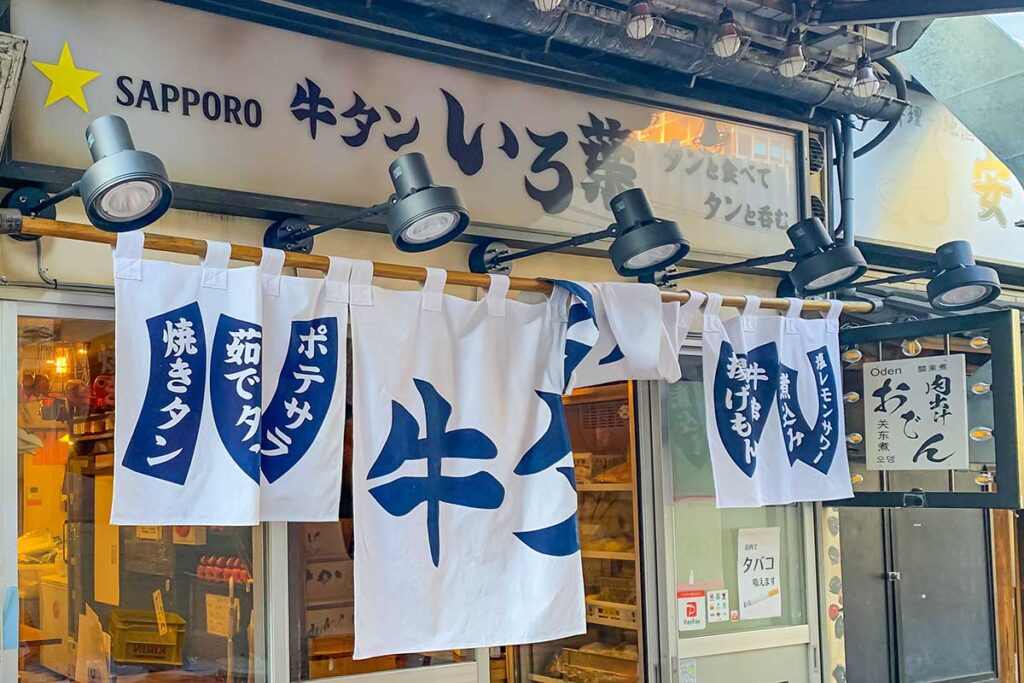
There is a history of why motsuyaki and Yakitori became popular among restaurant owners.
In 1947, some products had strict control, but non-control products were chicken, beef, and pork. So, many many started motsuyaki and yakitori (grilled chicken) restaurants.
So, motsuyaki, Yakitori (grilled chicken), grilled seafood, grilled meat, and grilled intestines are very popular here.
Omoide Yokocho Restaurants:
All restaurants are famous here. However, a few of them are worth tasting their food items.
- Banshakuya
- Saitama Main Store
- Kikuya
- Taro
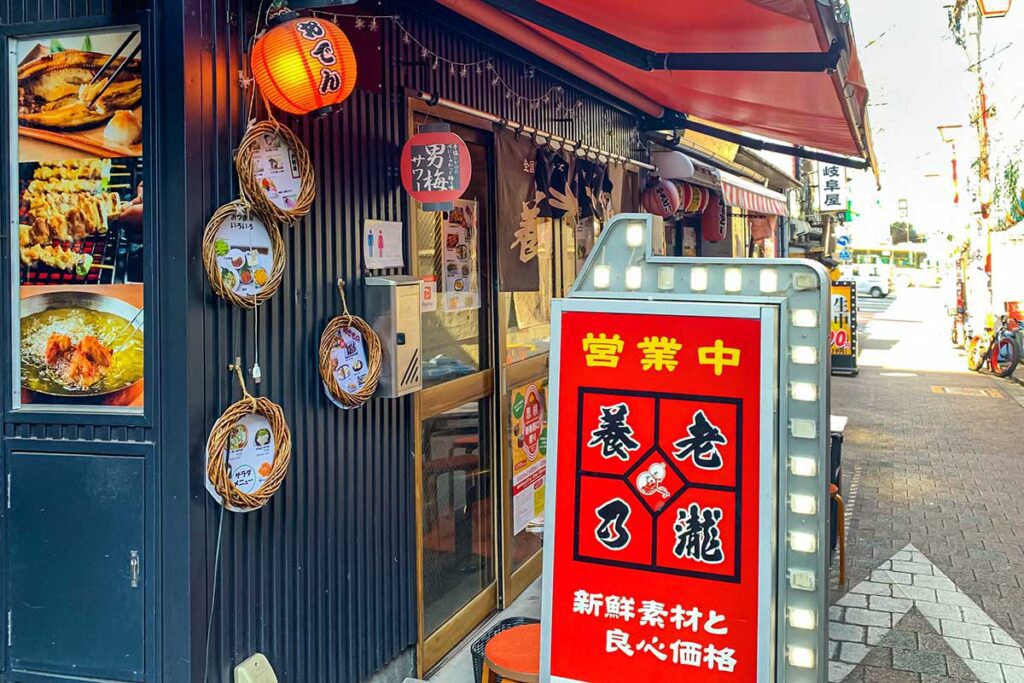
Omoide Yokocho nights are busier than days. Students, office workers, and visitors start coming in the afternoon. The small street is filled with smoke and voices in different languages, English, Korean, Chinese, etc.
So, it’s one of the spots to enjoy Tokyo at night at the end of the day.
Surroundings:
The surrounding of Shinjuku Omoide Yokocho is vast. Shinjuku Station is one of the biggest stations in Tokyo, where many famous shops and restaurants are located inside.
Besides, the main roadside of the line is full of currency exchange shops, Travelex, restaurants, and ticket shops, including Western Union. But the back of the line is full of restaurants, what people call Omoide Yokocho.
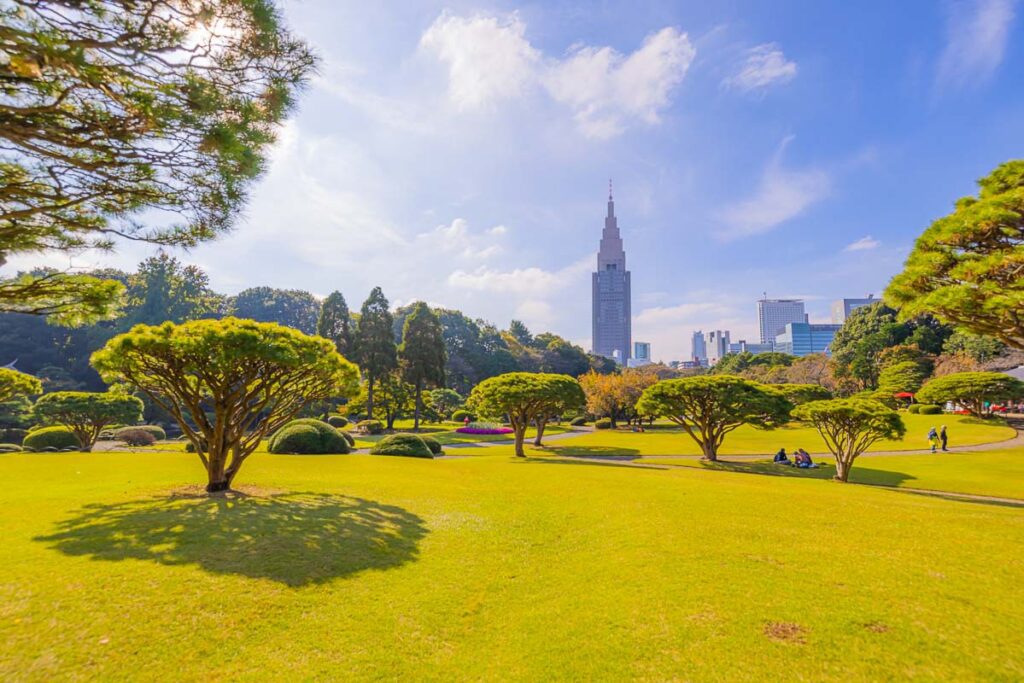
Some famous spots around the alley are Tokyo Metropolitan Government Building, Shinjuku Gyoen, Golden Gai, and Red Light District, renowned in the area.
Omoide Yokocho Day:
Every day is like a festival. People come and enjoy the whole day here. However, morning looks empty and evening looks festive.
But the street has one special day, and that’s November 24, Omoide Yokocho Day. To remember the November 24, 1999 fire accident, the shop and restaurant owners join in Disaster Prevention Drill.
People join wearing Omoide Yokocho Day T-shirts in the drill. Anyone can join but has to wear Omoide Yokocho Day T-shirts which are on sale from the beginning of November until the day.
In the evening, the participant gets food and drinks at the alley.
Omoide Yokocho hours:
10:00-20:00
Most of the restaurants open at 10 O. clock. However, every shop and restaurant has its own rules and business hours. To be confirmed, visit the official website I linked below.
Admission:
Free
Access:
Nearest Station: Shinjuku Station
(JR Lines)
Follow signs for West Gate
Exit via B15
Walk 3 min (350 m)
Shinjuku-Nishigushi Station
(Oedo Line)
Follow signs for Otakibashi-dori(Ave) District Gate
Exit via D3
Walk 3 min (90 m)
Address:
1 Chome-2 Nishishinjuku, Shinjuku City, Tokyo 160-0023, Japan
Phone: 03-3364-3235
Official website:
Get Your Answers:
1) What is Omoide Yokocho known for?
Omoide Yokocho, often translated as “Memory Lane” or “Piss Alley,” is a famous alley in Tokyo known for its traditional, narrow lanes filled with small izakayas (Japanese pubs), eateries, and bars.
It is celebrated for its unique atmosphere that captures a nostalgic feel of post-war Japan. This area is particularly famous for its yakitori (grilled chicken skewers) stalls, alongside other diverse Japanese cuisines and street foods.
2)Is Omoide Yokocho worth it?
Whether Omoide Yokocho is worth visiting depends on what you’re looking for. If you’re interested in experiencing a slice of old Tokyo, enjoying authentic local food, and soaking up a bustling yet nostalgic atmosphere, then it’s definitely worth it.
The area offers a unique experience that contrasts with the more modern parts of Tokyo, making it a popular spot for both locals and tourists.
3)Which exit is Omoide Yokocho?
Omoide Yokocho is located at Shinjuku Station, one of Tokyo’s busiest stations. To get there, the most commonly used exit is the West Exit of Shinjuku Station. Once you exit, you’ll find alleyways of Omoide Yokocho.
4)What does Yokocho mean in Japanese?
The term “Yokocho” in Japanese means a side street or alley off a main road. It typically refers to narrow lanes in urban settings, often lined with small shops, eateries, and izakayas.
Yokochos are known for their intimate, cozy atmosphere and are a staple in many Japanese cities, offering a glimpse into the local lifestyle and cuisine.
Book reasonable hotel in Shinjuku:
